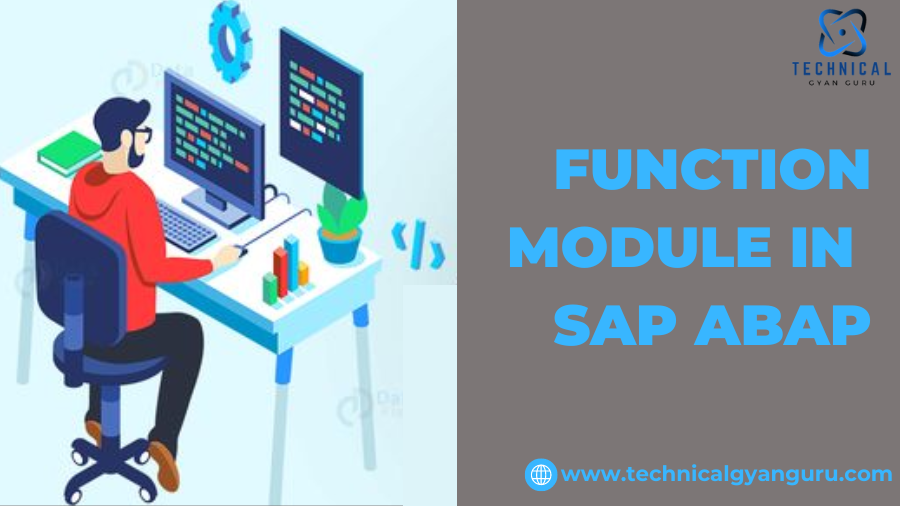
Discover the key features, benefits, and uses of Function Modules in SAP ABAP, and learn how they streamline development and enhance system efficiency
In the realm of SAP ABAP, where efficiency and reusability reign supreme, Advanced Function Modules (AFMs) emerge as champions. These meticulously crafted code blocks transcend the boundaries of basic functions, offering unparalleled power and flexibility for tackling complex business processes within your SAP landscape.
This blog delves into the captivating world of AFMs, equipping you with the knowledge to leverage them like a pro. We’ll dissect their core functionalities, explore real-world applications, and unveil the secrets to crafting AFMs that streamline your SAP operations.
Demystifying Advanced Function Modules (AFMs)
Imagine a toolbox brimming with specialized tools, each designed to address a specific business need with remarkable efficiency. That’s the essence of AFMs. They encapsulate reusable chunks of ABAP code, meticulously designed to perform intricate tasks, interact with data sources, and orchestrate complex business logic.
AFMs boast several key advantages over their rudimentary counterparts
- Enhanced Reusability: AFMs are built to be reused across various programs, eliminating the need for repetitive code and ensuring consistency throughout your SAP system.
- Modular Design: By compartmentalizing specific functionalities, AFMs promote a well-organized codebase, fostering better maintainability and collaboration among developers.
- Parameterization: AFMs can accept parameters, allowing you to tailor their behavior to distinct scenarios without modifying the core logic. This adaptability makes them incredibly versatile.
- Data Encapsulation: AFMs shield internal data structures from external programs, upholding data integrity and promoting secure coding practices.
- Error Handling: AFMs can incorporate robust error handling mechanisms, gracefully managing exceptions and preventing your programs from crashing.
Unveiling the Power of AFMs in Real-World Applications
The applications of Advanced Function Modules in SAP ABAP are as vast and diverse as the business processes they support. Here are a few compelling examples:
- Customer Order Processing: An Advanced Function Modules in SAP ABAP can manage the intricate steps involved in processing a customer order, from validating customer details and product availability to calculating discounts and triggering inventory updates.
- Financial Reporting: AFMs can be instrumental in generating financial reports by extracting data from various sources, performing complex calculations, and formatting the output according to predefined layouts.
- Material Management: Inventory control, goods receipt processing, and material valuation can all be streamlined through well-designed AFMs.
- Data Migration and Integration: AFMs can facilitate the seamless exchange of data between different SAP modules or even external systems, ensuring data consistency and accuracy.
- User Interface Logic: Complex calculations and validations within SAP screens can be delegated to AFMs, keeping the UI code clean and manageable.
These are just a glimpse into the immense potential of AFMs. By leveraging their capabilities, you can automate complex tasks, improve code quality, and expedite development cycles within your SAP environment.
Crafting Advanced Function Modules in SAP ABAP for Success Essential Tips
As you embark on your journey with AFMs, here are some valuable pointers to ensure their success:
- Clearly Define the Purpose: Before diving into code, meticulously define the specific business need the AFM will address. This clarity ensures a focused and well-structured implementation.
- Leverage Standard Function Modules: The SAP landscape offers a treasure trove of pre-built function modules. Utilize them whenever possible to streamline your development process and benefit from their robust functionality.
- Design for Reusability: Encapsulate generic functionalities within the AFM, allowing for customization through parameters. This broadens the applicability of your AFM across diverse scenarios.
- Adhere to Coding Standards: Maintain consistent coding practices and adhere to SAP’s ABAP guidelines. This promotes code readability, maintainability, and collaboration within your development team.
- Implement Robust Error Handling: Incorporate error handling mechanisms to gracefully manage exceptions and prevent system disruptions.
- Document Extensively: Create comprehensive documentation outlining the purpose, parameters, and functionalities of your AFM. This empowers future developers to understand and effectively utilize your creation.
By following these best practices, you can craft AFMs that become invaluable assets within your SAP system, streamlining operations and empowering you to focus on more strategic business initiatives.
Conclusion
AFMs are not merely code blocks; they are the building blocks of efficient and scalable business logic within SAP ABAP. By harnessing their power, you can unlock a new level of automation, code organization, and maintainability in your SAP landscape. So, delve into the world of AFMs, unleash their potential, and experience the transformative power they bring to your SAP operations.
Read Our blog here:-
What is the Purpose of Prompt Engineering in Gen AI Systems
Demystifying the Duolingo English Test Fee: What You Need to Know








